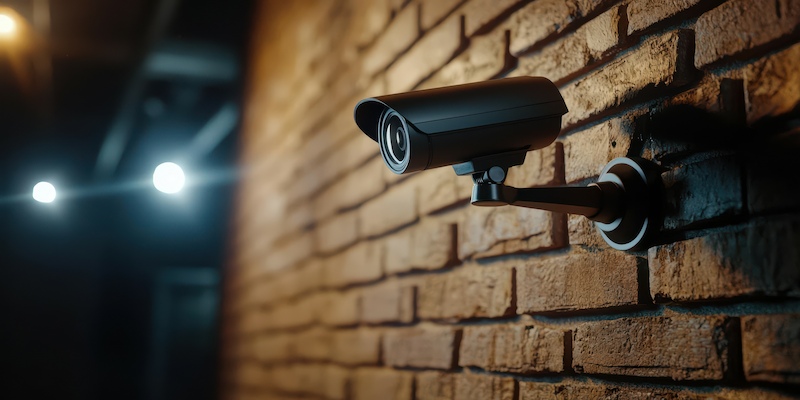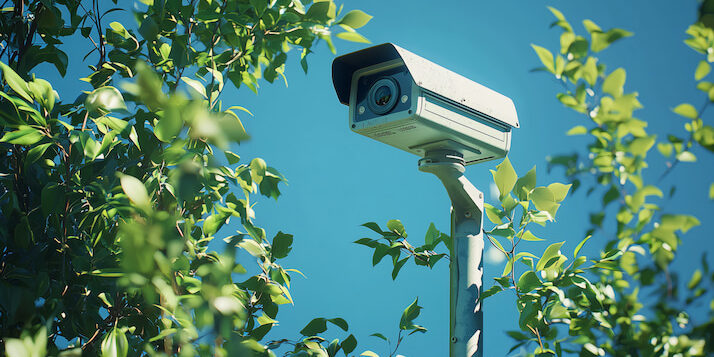Homeowner associations (HOAs) are not necessarily security experts, but they must be proactive in protecting their tenants’ properties and providing community safety. This guide provides a rundown of the best types of cameras to install in various locations around your property, offering extra security coverage, peace of mind, deterrence, and evidence.
Cameras will only work as part of an overall approach to HOA security, but for reassurance and rapid response, they are highly valuable tools.
There are many types of consumer and professional security cameras on the market to help in various security situations. Taking the most common example, any type of property will want a fixed camera with a zoom function to cover the main entrance to any property. If that entrance is unlit, then the extra feature of night vision increases its utility.
But outside that main access point, you might also want a pan-and-tilt camera that tracks activity beyond the door, giving security managers a broader sense of activity and visibility into who’s in the area. Those basics aside, there are cameras for all sorts of situations.
Bullet Camera Security
One of the most commonly seen camera types, waterproof bullet cameras are an ideal outdoor area solution for HOAs. They can be installed high up and focused on key activity points, acting as a deterrent to crime due to their high visibility.
They offer long-range viewing to help security personnel monitor any developing situation and are practical security solutions for parking lots and communal outdoor areas. These typically offer 8.0-megapixel resolution, equivalent to a 4K Ultra HD picture, for clear views of any activity. Bullet cameras use their zoom to focus on a specific activity and are typically equipped with IR sensors for use at night.

Dome Camera Security
Dome Cameras are more subtle than bullet cameras, fitting more neatly with their surroundings. They provide a wider field of view, making them ideal for larger indoor shared spaces, such as communal rooms, dining areas, or exercise rooms. Using dome security cameras provides several benefits, aside from their low profile, which doesn’t scream security to residents or visitors. They can deliver low-light viewing to see in gloomy or dark conditions, and are typically vandal-resistant due to their tough dome construction.
Pan and Zoom Security Cameras
For more open areas, Pan-Tilt-Zoom (PTZ) cameras offer greater flexibility for security operators. They can cover larger external areas, notably car parks or pools, where zoom and flexibility are key to identifying a potential issue, accident, or crime.
These cameras can typically track fast-moving incidents, people, or vehicles as they move through a scene and may come with powerful IR lights for nighttime monitoring. Their zoom functions mean operators can see clearly what’s going on at the far end of a property, and then track movement to the extremes of their visibility level.
Wired or Wireless Cameras?
Most modern cameras use a wireless connection to communicate data to a security station or send alerts to guards. However, they still need a wired electrical connection to provide power.
For truly remote areas, all-wireless (aka wire-free) battery-powered cameras are available with local storage, if they are beyond WiFi range. Some can use a solar charger, but at a higher expense in maintenance and risk. But they can be very useful in monitoring spacious gardens, behind garage blocks, and other remote areas.
Extra Camera Features
Depending on the manufacturer and your HOA’s budget, security cameras can also feature gunshot and other sensors to provide higher alerts in certain situations. They may come with a subscription to access powerful cloud software for analytics, which can help spot incidents or suspects before a security guard would. In general terms, the more features you have, the better security your setup will provide.
Choosing the Right Technology
Typically, a security installer will recommend the appropriate cameras for each use case around an HOA or HMO property. They can install them correctly and securely, and provide the proper base station or software for monitoring purposes. Beyond that, HOAs can look to provide as much security as they think is necessary for their occupants and guests.

